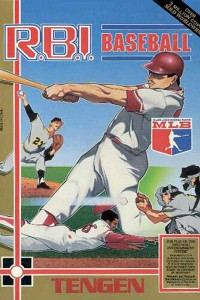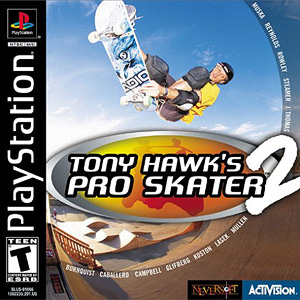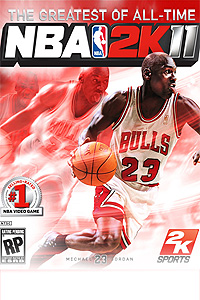
15. "RBI Baseball"
Systems: NES
Year Released: 1987
Superstar Status: Head inside the home clubhouse of Dodger Stadium, and you won't find Matt Kemp and crew playing "Call of Duty" or even "MLB: The Show," but you might find a bunch of ballplayers huddled around an old NES while trading swings (and trash talk) in the original "RBI Baseball."
Boasting curveballs that bent in ways that defied physics, not to mention lineups that included everyone from the speedy Cardinals and Vince Coleman to the Bash Brothers in Oakland, you have a game that's still just a ton of fun to play 26 years after its release.
"At that time where most games had a very rough ability setting, it's maybe the part that each character having an individuality with detailed abilities that made the game one of the greatest sports games ever," says Yasushi Ono, the director of "RBI Baseball" on the NES. "At that time, Nintendo's 'Baseball' existed as a baseball game, but there were no parameters for each player, and it was the same using which player or which team. 'RBI Baseball' was the first (in NES) to create a parameter setting for each player and an individuality to each character, making it accepted by many fans.
"It was created so that anyone can easily enjoy baseball by making it simple to play, not making the action elements (making the control of the player possible) complicated. Also, the fact that we didn't make a difference in height may be another part. We did this in order for the pitcher wouldn't have too many advantages, including the fact that we decreased the types of breaking balls with only left/right and forkball. We didn't want players to feel stressed that they couldn't hit, even in the game."
Dev Talk: Ono speaking about the Japanese version of the game that shipped with different rosters than the U.S. version: "I was really happy to hear the audiences call out the real baseball player's name with the name in-game when I went to see a real professional baseball match. At that time, since copyright for games wasn't so strict, we used real baseball players but with fictional names, for example, the name of Kuwata (famous Japanese baseball player) as Kuwawa, and Nakahata as Hatahata. But the game became popular, so people were calling the real players with the in-game names, which is something funny since we were using fictional names. Evidently, everyone knew who the model was."
Pro Talk: Adds New York Yankees pitcher CC Sabathia, "We actually have it in our clubhouse in New York. We have an old Nintendo with 'RBI.' That was the game that started it all. That's the one that really got me hooked. I used to play as Detroit, and I still play as them. That was the first baseball game I remember playing that had the actual players, and I just remember thinking how cool it was to play as the real guys. Now, everyone is used to playing as the real guys, but back then, that was huge. I knew all the players because I would play as them in 'RBI.' I was that kid."

14. "FIFA Soccer 10"
Systems: Xbox 360, PlayStation 3
Year Released: 2009
Superstar Status: The defining game in the best-selling "FIFA" franchise, "10" introduced a new engine with unmatched artificial intelligence and animations along with innovative new modes like Online Team Play and Ultimate Team that continue to influence every sports game released since.
"I think that the advent of the PS3 and Xbox 360 era heralded a leap forward in online connectivity, computing power and graphical fidelity that fed into, or indeed created, a new level of expectation from our consumers on what sports video games should be and should play like. 'FIFA 10' was the first football game that met those lofty expectations," explains the game's creative director, Gary Paterson. "We built a new game engine specifically to take advantage of the new technology and this enabled us to do more with AI and Animation than we had ever done, and create a gameplay innovation called 360 degree dribbling that delivered tremendous freedom with the ball. It felt like we had finally created a game that looked, moved and behaved more realistically than any other 'FIFA.' In doing so we created a game that captured the emotion of our sport. Games had the ebb and flow, the drama, the glory, the disappointment and the authentic variety of real football. Outside of gameplay we delivered an online-enabled game with depth, longevity and, in Online Team Play and Ultimate Team, significant innovation.
"I'd like to think that 'FIFA 10' has an influence on sports games in a number of ways. Firstly, in online we can see any number of other sports games introducing Online Team Play, Ultimate Team and Live Seasons inspired modes. That is to say, online modes where you play as a single player with and against other gamers or online modes where up-to-date real life data is used to keep the gamer continuously engaged. In gameplay terms, I think that 'FIFA' led the way in espousing acute realism as a design tenant and showing that this approach can be successful. The game was built with no cheating or scripting and wherever possible tried to mimic real life concepts, from acceleration curves to defender reaction times and even how a player kicks the ball and how that affects the amount of error on shots. It also heralded technology, particularly advanced animation technology, as being an important pillar of sports games, highlighted particularly by the locomotion system that was created for 'FIFA.' In all of these areas, I'd like to think that 'FIFA 10' somewhat influenced the current crop of sports games."
Dev Talk: Paterson adds, "As I'm sure most people are aware, motion capture plays a significant role in creating a realistic looking sports game. On 'FIFA' we have been fortunate enough to capture some of the best players in the world. In one instance we were in Barcelona shooting with five or six pros from around Europe, including the two-time world player of the year Ronaldinho. At the shoot, there is a large screen that shows, in real time, an in-game render of what the motion capture talent is doing. It's a way for us to check what the motion would look like in-game, but is also just fun for the talent themselves. Ronaldinho, being an easygoing, fun-loving character, loved seeing his virtual character on the big screen making moves. He spent half the shoot dancing, fooling around with the ball, and showing off some incredible moves, much to the amusement of his entourage and to us. We kept the cameras rolling the entire time and many of the flicks, tricks and skill moves from that session made it directly into 'FIFA 10.'"
Pro Talk: U.S. soccer star Landon Donovan says, "The great thing about EA is that they spend so much time with the athletes to determine how they move, what they look like, what kind of special moves they have, how they shoot the ball, how they pass the ball -- and that just makes it so much more authentic. And for us, the average kid watches us play on TV and sees how we play, but for us, when we play we want it to be real. We want it to be us out there in the game and they do such a great job of that. It's a lot of fun."

13. "NFL Blitz"
Systems: Arcade
Year Released: 1997
Superstar Status: Before players were fined for helmet-to-helmet tackles, the NFL actually licensed a game where defenders would suplex ball carriers and even drop Randy Savage-like elbows on them post-whistle … and it was great. The "NBA Jam" of football games still doesn't get old.
Then again, it's a game that, according to creator Mark Turmell, almost never happened.
"There is one amazing behind-the-scenes story that not everyone knows." Turmell said. "We acquired the license from the NFL, we developed the game and had it on location for about eight weeks tuning and testing before we were prepared to ship the game to arcades. It was the No. 1 earner in our Chicago test locations. The NFL had two representatives fly in on a Friday to provide final approval before we began shipping on Monday. After playing and reviewing the game, they went behind closed doors for 30 minutes, and when they came out they said, 'Due to the in-game violence, the NFL has decided to wash their hands of the project,' returning our licensing monies, and wanting to part ways. Instead, we suggested removing all the offending tackles and violent moments from the game, test in arcades over the weekend, and together make the final decision on Monday. With the violence stripped out, the game was still No. 1 over the weekend, and the NFL agreed we could move forward. So the game people play today, and perceive as a violent hard-hitting game, is actually the watered down game with 50 percent of the animations and moves stripped out."
I actually saw a video of the original game, and Turmell is right, as the "Blitz" I first witnessed even had defenders piledriving ball carriers to the turf in epic "Mr. Wonderful" fashion. You think "Blitz" is violent now, you should've seen what almost released in its place.
Dev Talk: Turmell says, "It's still influential today because of its smoothness, pacing, and player-versus-player nature. Ten minutes of action, playing out like a boxing game to determine the best player. We imagined that each play was the equivalent to an attack. Uppercuts, jabs, block, etc. It also stays relevant because the only competition is 'Madden,' which has a completely different feel and simulation approach to the sport. But what makes it a 'Game Design Best Practice' case study is its pacing, communication to the player, use of audio, and the incredible amount of control it provided the player."
Pro Talk: Adds San Francisco 49ers linebacker Patrick Willis, "What I like about the game best is no flags. You can hit people when they're up in the air, blow them up before the ball even gets there, and no flags. I love that. 'Blitz' was one of my first loves when it comes to gaming. Before I was a 'Madden' fan, it was all about 'Blitz.'"

12. "Tony Hawk's Pro Skater 2"
Systems: PlayStation, Xbox, Nintendo 64, Dreamcast
Year Released: 2000
Superstar Status: Tony Hawk is known in some circles more for his video game franchise than his skating, and THPS2 is one of the main reasons why. Eye-popping trick combinations, the addition of the manual, a park editor, create-a-skater, and a killer soundtrack are just some of the highlights of this near-flawless action sports game.
"When the game first got popular, many kids (and their parents) didn't think I was a real person," says Hawk." Some kids thought that I was named after a video game. Pro skaters at the time simply referred to it as 'The Game,' which was probably my greatest honor at the time.
"It embodied the fun and spontaneous nature of skateboarding, and offered exciting, challenging gameplay to hardcore gamers (even if they didn't skate). Many people have told me that the soundtrack introduced them to different types of music and bands they would have never discovered otherwise."
Pro Talk: Hawk says, "I feel like [the series] changed my life in terms of giving skating a much bigger appeal. The game raised the awareness for skating and the appreciation for it. That's just not something I ever thought would happen. I didn't think it would take a video game to bring skating to the public's acceptance, but it has, and that in turn has changed my life just because skating is so much more acceptable that now I have a lot more opportunities in skating and traveling. This is stuff I never dreamed of."

11. "NBA 2K11"
Systems: PlayStation 3, Xbox 360
Year Released: 2010
Superstar Status: Michael Jordan is featured in what is arguably the greatest display of digital replication in the history of sports gaming. Gamers take over Jordan's career, guiding him through the Flu Game, epic battles against the Pistons' "Bad Boys," and even the "God disguised as Michael Jordan" game against Larry Bird and the Celtics. It's like a history lesson for kids who grew up unfortunate enough to miss the Jordan era.
"The Jordan Challenge really took the 'NBA 2K' franchise as a whole to the next level," says Greg Thomas, president of product development for 2K Sports. "Michael Jordan wasn't just a cover athlete, he was an integral part of every aspect within the game. It was a very fitting mode for the best player ever."
Dev Talk: Thomas says, "I think probably the funniest and/or saddest thing was when we were discussing putting Michael Jordan on the cover, I wasn't the largest proponent of it. Looking back now I was really, really wrong -- more than I usually am -- but I was concerned that we would attract older gamers and not so many younger gamers. I really very much underestimated the power of the greatest player to ever play the game. And I get reminded about it to this day. I'm so glad I was wrong."
Pro Talk: Michael Jordan adds, "I didn't want them to put me in there if it didn't look like myself, and I didn't want them to put stats that weren't my stats. The guys at 2K are very smart, so they know a lot of things about the game of basketball, and obviously, the things that I've done to the game and the way that I played. I wanted my character to be as close to the way I played as possible, so that it's not something that's false-promoted. I wanted something real.
"It's a long way from the first game I was in, but it just shows you the technology that's evolved over the years. The fact that they can come as close as they have to the way that I played the game, my tendencies, my tongue out, my pants being short, my running technique, my fadeaway ... all the things I've done that they've been able to illustrate in the game just shows how technology has evolved."
Top 25 Sports Video Games Ever:
Introduction: The changing sports video game landscape
Nos. 21-25: Bulls, Blazers and Fat Guys
Nos. 16-20: MLB, Mountains and Madness
Nos. 11-15: Blitz, Boards and His Airness
